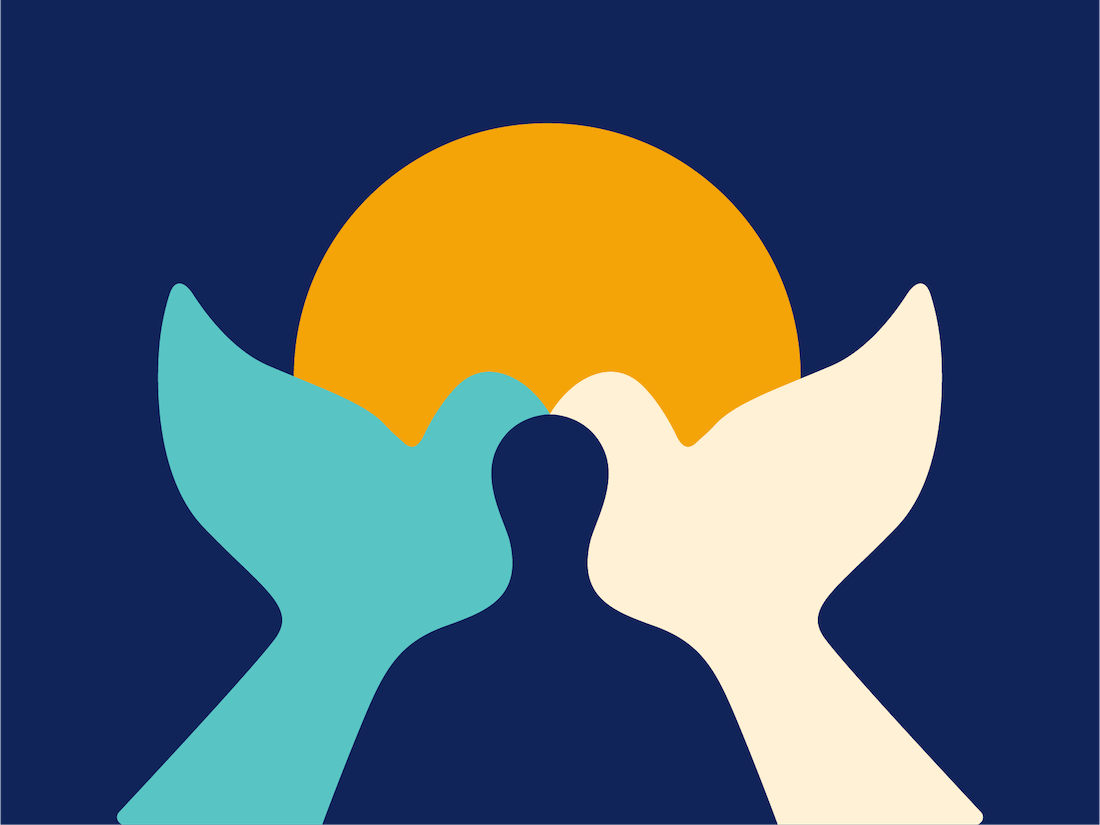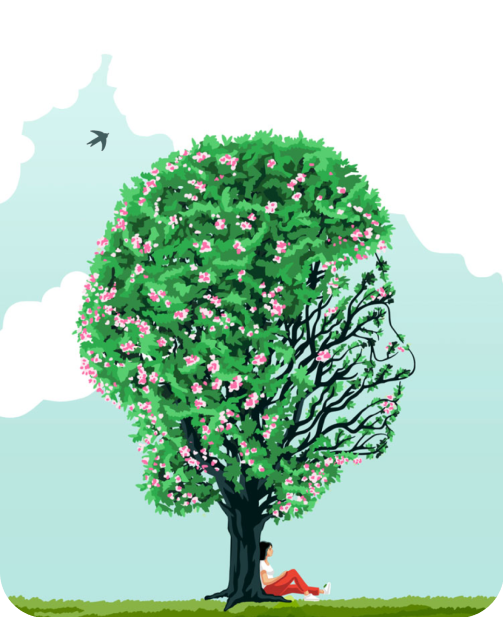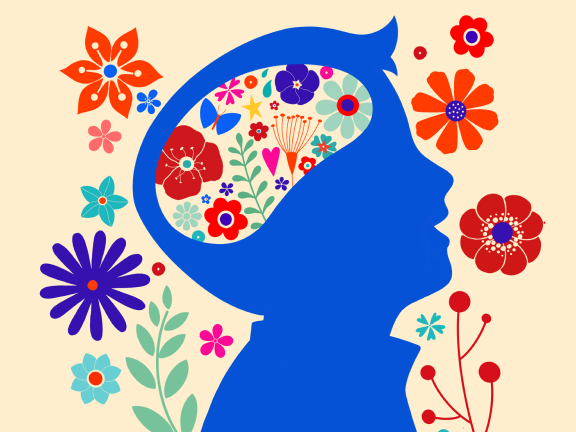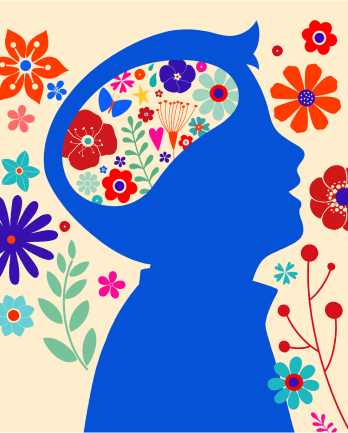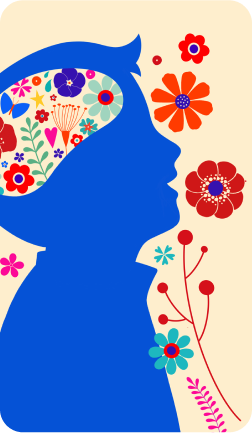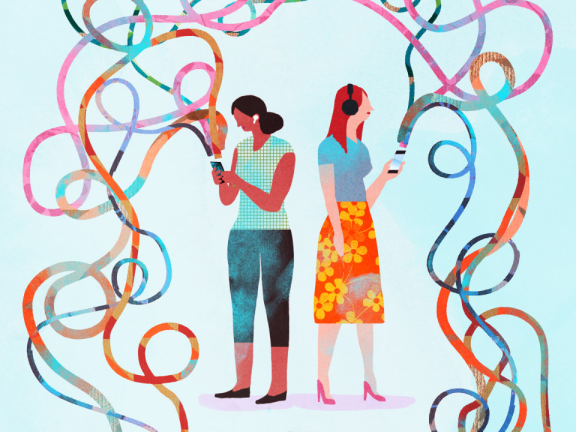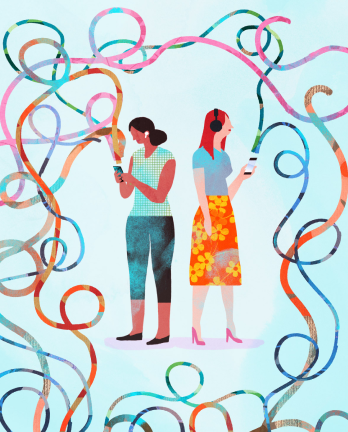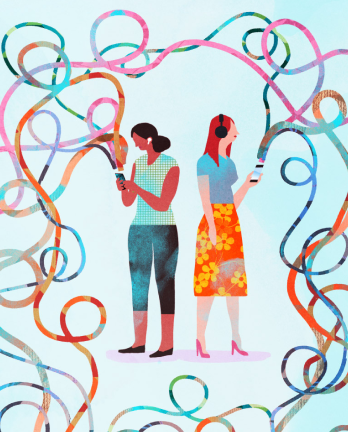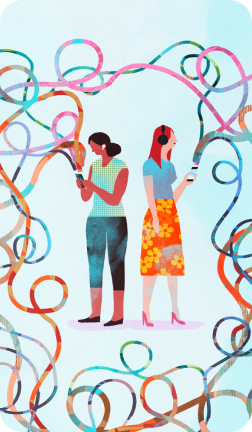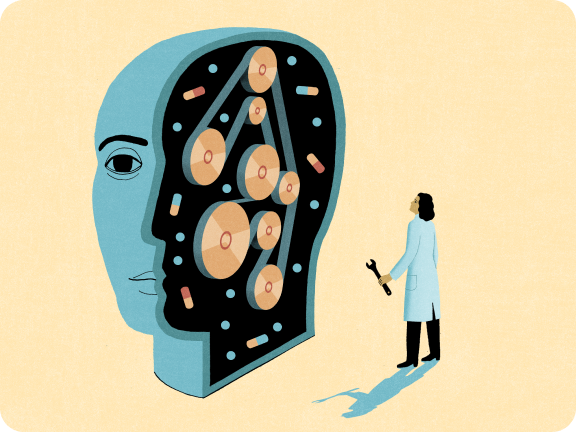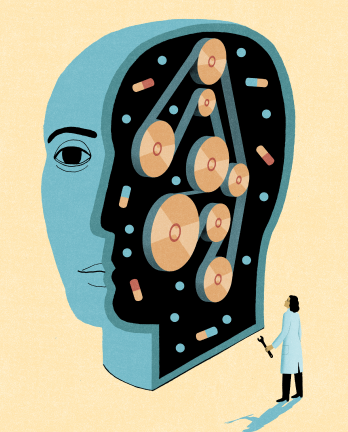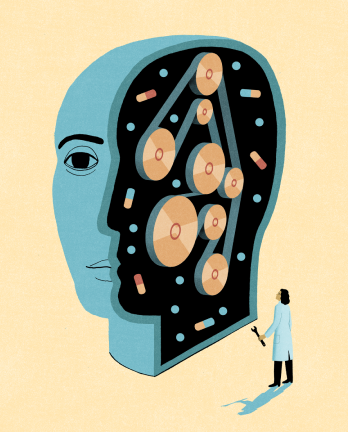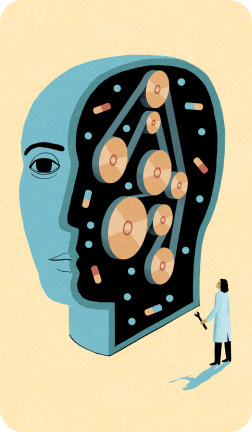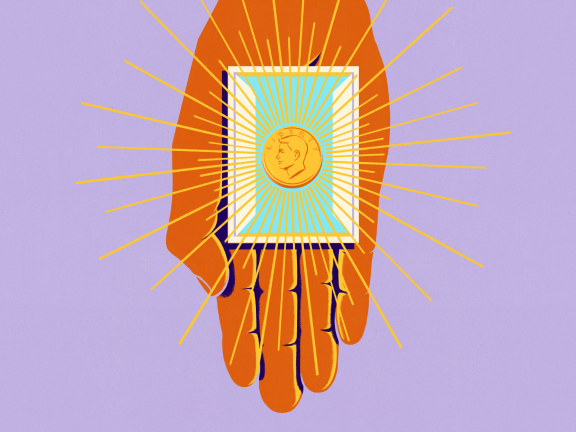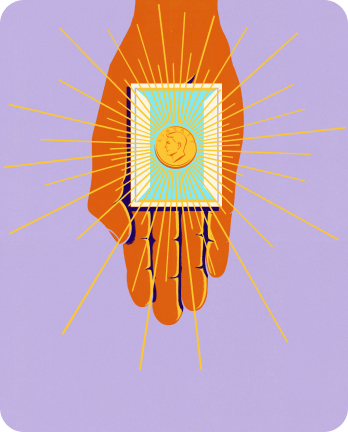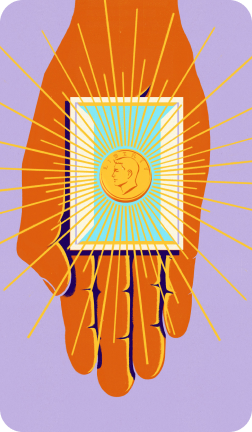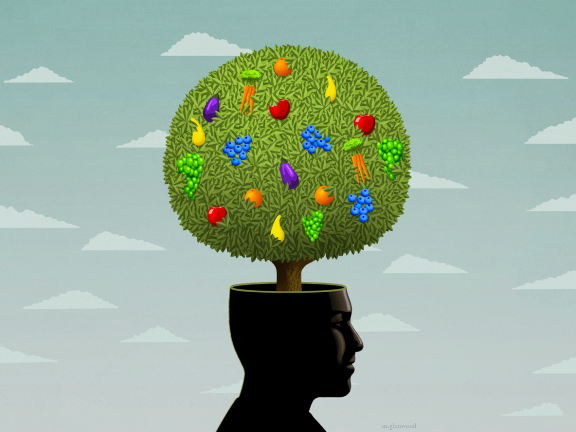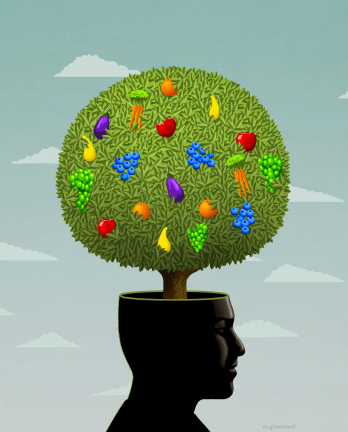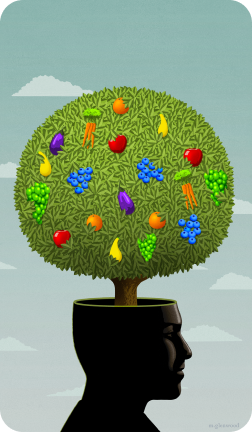Partner Content
This content was paid for by Jefferson Enterprise and created by INQStudio. The news and editorial staffs of The Inquirer had no role in this article’s creation.
This content was paid for by Jefferson Enterprise and created by INQStudio. The news and editorial staffs of The Inquirer had no role in this article’s creation.
Social media shapes much of our online news and content consumption. We’re decoding its profound impact on our psyche and interactions.
Social media shapes much of our online news and content consumption. We’re decoding its profound impact on our psyche and interactions.
Social media shapes much of our online news and content consumption. We’re decoding its profound impact on our psyche and interactions.
Social media shapes much of our online news and content consumption. We’re decoding its profound impact on our psyche and interactions.
hat happens when you finally put down your phone after a long scroll on one of your social media apps? Do you open your laptop and type in the URL of that same social media website in your browser to give your eyes a break and continue the addictive scroll on a bigger screen?
If so, you’re not alone. More than four billion people worldwide routinely use social media. The average user spends around 2.5 hours daily on platforms such as FaceBook, X, Instagram, Reddit, and TikTok.
Each swipe, like, and share has become a token of our collective participation in a grand global conversation. The online social network has flattened our world, brought people closer, and even facilitated social movements. We’re more than mere users; we’re constituents of a new digital reality that thrives on information exchange and shared experiences.
The human brain has evolved over millennia to adapt to our environment, a trait that has enabled our survival and success as a species. But the rapidly advancing communication technologies of the last few decades are unlike any phenomenon our brains and societies have encountered thus far, and the digital experiences and relationships they enable represent a seismic shift in how we engage with each other.
Each social media engagement molds our thoughts, feelings, and actions in so subtle a manner that we’re not even aware. The profound influence of these platforms on our brains can manifest in unexpected, and even dangerous, ways. And that is the rub: For all of the good that social media has done, it can also contribute to a culture of aggression, harassment, and even violence.
Social Media and the Brain
Social networking platforms are designed to keep you engaged and coming back, and that’s where a lot of the trouble starts.
In May 2023, Dr. Vivek Murthy, the U.S. surgeon general, cautioned that the use of social media can present a “profound risk of harm” to the cognitive health of children and adolescents because of the extreme and harmful content kids can be exposed to as well as the unhealthy behaviors, like habitual scrolling and bullying, the sites encourage.
Excessive use of the internet, more broadly, is now widely accepted as a behavioral addiction that threatens people of all ages. Neuroimaging research indicates that people meeting the diagnostic criteria for internet addiction exhibit brain activity in the same regions associated with other substance and behavioral addictions. In the U.S., 31% of adults—and nearly half of adults ages 18 to 29—describe themselves as “almost constantly” online, according to a Pew Research Center survey.
Social media is quietly (and sometimes loudly, if you’ve opted in to audible notifications) reengineering our brains and reshaping our behavior in ways we are only beginning to understand. These platforms routinely activate the brain’s reward system, targeting the regions that manage emotions, impulse control, and pleasure-seeking behaviors.

The more isolated you are in your belief system, the more you feel that the other is a threat. Social media can amplify this.”
Dr. Andrew B. Newberg
Research Director at Thomas Jefferson University’s Marcus Institute of Integrative Health and professor in the university’s department of integrative medicine and nutritional science
These reactions pose unprecedented challenges to our mental health. As our brains adapt to these novel stimuli, the implications for cognitive functioning in the era of pervasive social media demand our attention and intervention.
The Algorithmic Dilemma
Social media platforms initially organized the content users saw on their feeds in reverse chronological order: Content posted most recently appeared at the top, and users scrolled down to see older posts.
But as more users and content flooded the platforms, algorithms—instructions that determine what individuals see in their feeds—emerged to solve a practical problem: how to organize content when there is more available than one user could practically engage with.
Algorithms helped by tailoring content to users’ interests and preferences based on the posts they engaged with previously. The move worked. One German study concluded that when Twitter (now X) switched from a reverse-chronological timeline to algorithmic content selection in 2016, likes increased by 20%, and retweets by 15%, in just 30 days. Twitter reported that the change drove increases in monthly active users and time spent on the platform.
Today, these algorithms wield immense control over our online experiences, surfacing content that keeps us hooked and scrolling. Social platforms have also steadily stepped up the amount of recommended content we see from accounts we’re not already following. The consequence? Algorithms have become the ultimate arbiters of what we see—and, equally importantly, what we don’t.
Allowing social media platforms to be the architects of our digital experience is having broad societal ramifications. It’s fueling echo chambers, where users are consistently shown content that aligns with their preexisting beliefs, reinforces their biases, and limits their exposure to diverse perspectives. In this way, social media is contributing to stronger divides between “us” and “them,” and spending time on social networks is making more of us feel alienated, isolated, and even hostile, according to Dr. Andrew B. Newberg, research director at Thomas Jefferson University’s Marcus Institute of Integrative Health and a professor in the university’s department of integrative medicine and nutritional sciences.
“This makes it possible to dehumanize ‘others’ and group them into conceptual otherness, which can allow us to justify expressing hostility at ‘them’ since they represent a concept that threatens ‘us’ or our worldview,” says Newberg. “The more isolated you are in your belief system, the more you feel the other is a threat. Social media can amplify this.”

If social media corporations really want to be responsible purveyors of information, they are going to have to prioritize public health and safety over profit.”
Dr. Christine Laine
Editor-in-Chief of Annals of Internal Medicine AND Jefferson Health provider
As we grapple with the profound effects of social networking on our brains and behavior, it’s imperative that we seriously scrutinize the role of algorithms in shaping our digital reality. “If social media corporations want to be responsible purveyors of information, they are going to have to prioritize public health and safety over profit,” says Dr. Christine Laine, editor-in-chief of Annals of Internal Medicine and a Jefferson Health provider.
Triggering Negativity Bias
There’s an evolutionary feature in our brains that, combined with the type of content prioritized by algorithms, can turn social media scrolling from a mere time waster into a potential minefield of triggers for anxiety, bullying, and even offline self-harm and violence. The human brain is inherently inclined toward a negativity bias, an evolutionary holdover that makes us pay more attention to threatening or negative stimuli in order to ensure we’re prepared to defend life and limb in the face of serious threats.
Perhaps counterintuitively, outrage is also cognitively rewarding: We get a dopamine hit when we see anger- and even fear-inducing content. There is even a name for this phenomenon: doomscrolling.
These hardwired reactions are one reason why incendiary content travels so far and so fast on social platforms. To make matters worse, the viral vitriol that characterizes many online experiences can permeate our real-world perceptions and actions. The consequences of this dynamic are alarming:
But it’s not all doom and gloom. As our understanding of social media’s impact on our brains and behavior deepens, innovators are stepping in with solutions designed to mitigate these effects.



Reimagining the Social Media Landscape
Social media has enabled community, connection, creativity, and a wonderful opening up of our world. Our challenge is to cultivate a healthier and more sustainable relationship with social media that acknowledges its pitfalls and seeks to curb its potential for harm.
That’s why the solution is not simply to disconnect but to evolve our engagement, set boundaries, and advocate for more humane digital ecosystems that prioritize our well-being.
However, according to the Center for Humane Technology, one-off actions by individuals aren’t sufficient to address the pervasiveness of social media and its deliberate engineering to keep us posting and scrolling. Innovators from a cross-section of fields are stepping in to further understand social media’s harms and reengineer how these platforms incentivize engagement.
Finland’s Ministry of Education and Culture launched an innovative “Media Literacy School” that integrates media literacy, including understanding how to navigate social media, into the core of schools’ curricula. The initiative acknowledges how insidious social media’s reach into our psyches and behaviors can be.
In California, legislators passed a bill in November 2023 requiring K–12 students to learn media literacy, including how to think critically about content they encounter online and spot inaccurate news reports, often engineered for outrage. “Ultimately, education needs to start early—in grade school,” says Laine. “Social media corporations could help by funding more such educational efforts.”

Ultimately, education about social media needs to start early—in grade school. Social media corporations could help by funding more such educational efforts.”
DR. CHRISTINE LAINE
EDITOR-IN-CHIEF OF ANNALS OF INTERNAL MEDICINE AND JEFFERSON HEALTH PROVIDER
YouTube implemented changes in its algorithm to limit “algorithmic radicalization”—the spread of harmful and extremist content that had been running rampant on the platform before it made the switch.
Tristan Harris, co-founder of the Center for Humane Technology and a former Google design ethicist, is leading initiatives to reform the tech industry from the inside. He proposes an approach known as Time Well Spent, urging developers to create apps that enrich people’s lives and center their well-being rather than simply capturing their attention.
Peace technology, a burgeoning field, seeks to harness digital innovation to create online environments intentionally characterized by empathy, collaboration, and constructive discourse in order to foster a more harmonious digital society. In practical terms, this includes technology such as AI content moderation systems designed to detect and root out hate speech.
We can’t put the social media genie back in the bottle—nor would we want to eliminate the opportunities it provides for fun, discovery, and community. These innovations are an invitation for us all to contribute to the reimagining of the digital social landscape. Social media can harm, yes, but it can also be a tool to educate, inspire, and catalyze meaningful change.
How to stop the scroll Bet you CAN watch just one. Here’s why: The more videos you watch on social media, the harder it is to pull away. Firing up an app with the intention of watching only one video makes it easier to avoid being roped into endless scrolling. Need more support? Consider downloading a social media timer to limit the number of minutes you spend on these platforms.
How to stop the scroll
Bet you CAN watch just one. Here’s why: The more videos you watch on social media, the harder it is to pull away. Firing up an app with the intention of watching only one video makes it easier to avoid being roped into endless scrolling. Need more support? Consider downloading a social media timer to limit the number of minutes you spend on these platforms.
Illustrations by Chad Hagen
Home of Sidney Kimmel Medical College
